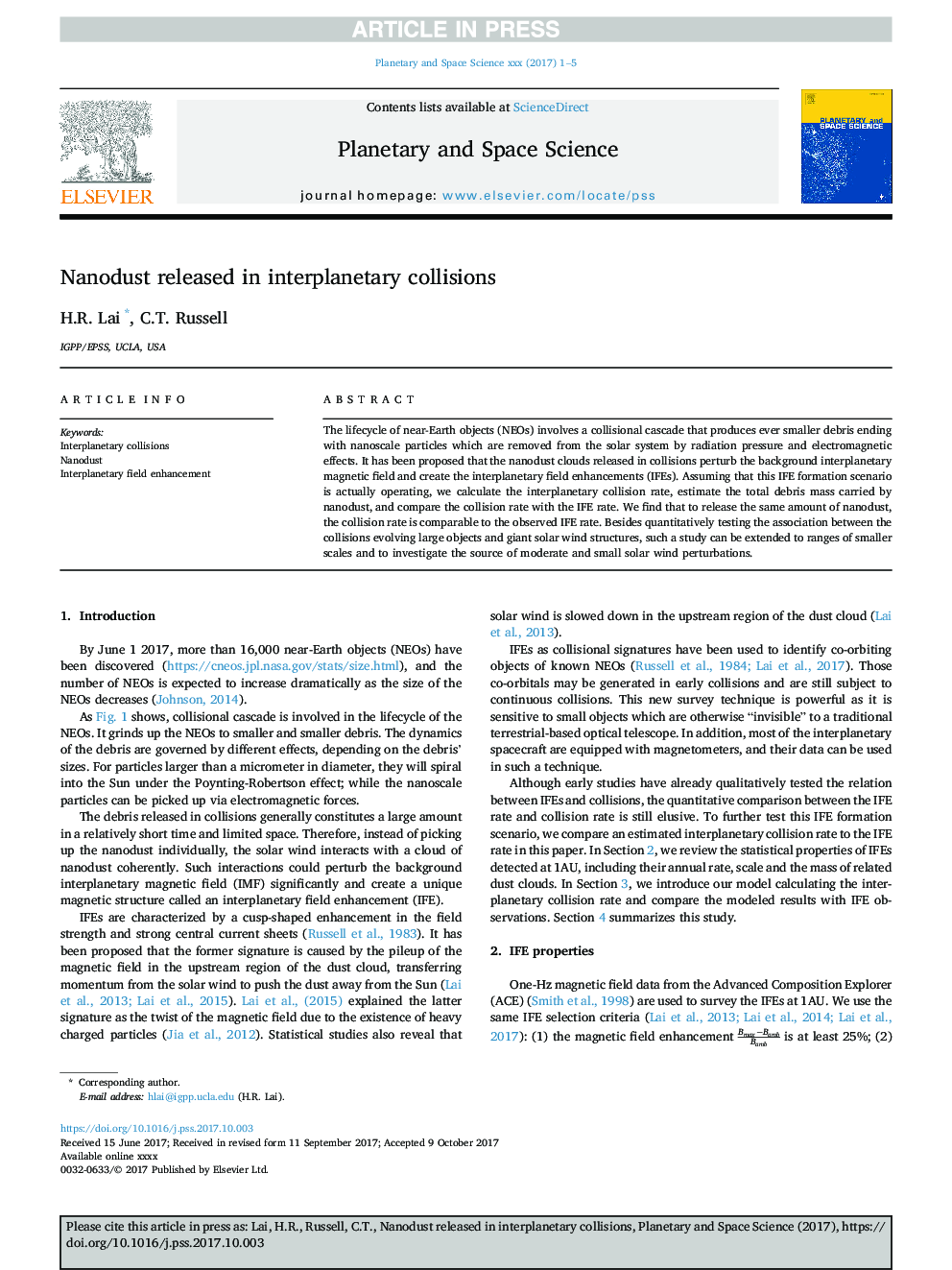| Article ID | Journal | Published Year | Pages | File Type |
|---|---|---|---|---|
| 8142162 | Planetary and Space Science | 2018 | 5 Pages |
Abstract
The lifecycle of near-Earth objects (NEOs) involves a collisional cascade that produces ever smaller debris ending with nanoscale particles which are removed from the solar system by radiation pressure and electromagnetic effects. It has been proposed that the nanodust clouds released in collisions perturb the background interplanetary magnetic field and create the interplanetary field enhancements (IFEs). Assuming that this IFE formation scenario is actually operating, we calculate the interplanetary collision rate, estimate the total debris mass carried by nanodust, and compare the collision rate with the IFE rate. We find that to release the same amount of nanodust, the collision rate is comparable to the observed IFE rate. Besides quantitatively testing the association between the collisions evolving large objects and giant solar wind structures, such a study can be extended to ranges of smaller scales and to investigate the source of moderate and small solar wind perturbations.
Related Topics
Physical Sciences and Engineering
Earth and Planetary Sciences
Geophysics
Authors
H.R. Lai, C.T. Russell,
